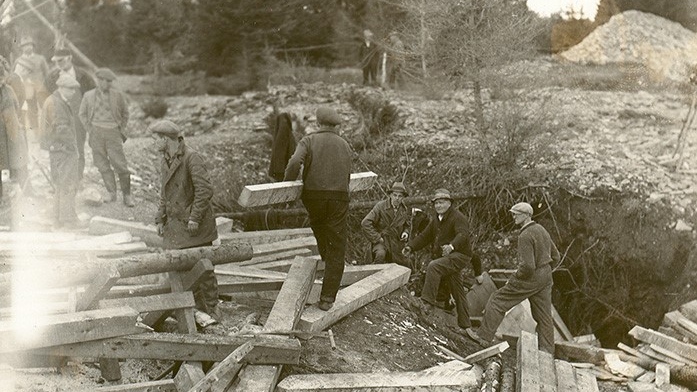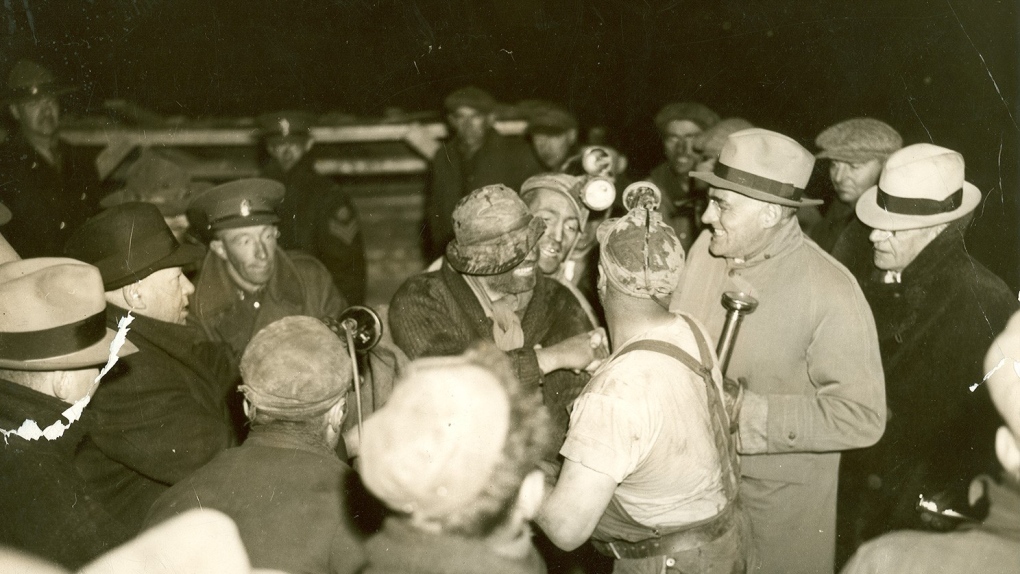'History was made here': Remembering the Moose River Gold Mine rescue in Nova Scotia
It's been nearly 90 years since three men were rescued from a gold mine in Nova Scotia.
On April 12, 1936, mine owners, Dr. David Robertson and Herman Magill, along with timekeeper, Alfred Scadding, were trapped 141 feet underground after supports gave way causing a roof collapse in the Moose River gold mine.
"They were trapped there for 10 days. The rescue effort that took place was huge. Miners came from all over the country to try and rescue these men," said Betty Belmore with the Moose River Gold Mine Museum Society.
The Salvation Army said its Emergency Disaster Services team was on scene during the rescue efforts to serve food and hot beverages, and to provide supports to rescuers, community members, and the loved ones of those trapped.
"This is a remote area of Nova Scotia that has no cell service, has no good communication. It would have been a dirt road in the 1930s. We still came. We're still here. We're still connected to the community," said John Bignell, with the Salvation Army's Emergency Disaster Services.
After six days of rescue efforts, there were no signs of survivors. Just when officials were about to abandon their work, they were finally about to make contact with the three men.
 Men putting new timber for supports through the new shaft of the Moose River Gold Mine to help men trapped below. (Nova Scotia Archives / Allen Fraser)
Men putting new timber for supports through the new shaft of the Moose River Gold Mine to help men trapped below. (Nova Scotia Archives / Allen Fraser)
"There were lots of people who had given up, but there were still many who did not give up on the idea that there were people down there still living," said Belmore.
Magill died hours later of pneumonia.
It was another four days before Robertson and Scadding were brought to the surface.
"Underground mining did not happen here again. Life went from being a bustling community to just gradual disappearance of people moving away," said Belmore.
The Salvation Army said the rescue efforts were broadcast to more than 650 radio stations throughout North America, and were even picked up by the BBC and broadcast across Europe.
"History was made in this community. The first live broadcast around the world. That's something to be proud of," said resident and museum board member Stephen Paugh.
 Dr. David Robertson and group after he was rescued from the Moose River Gold Mine. (Nova Scotia Archives / Evening Telegram Toronto)
Dr. David Robertson and group after he was rescued from the Moose River Gold Mine. (Nova Scotia Archives / Evening Telegram Toronto)
The 88th anniversary of the rescue was marked Saturday at the Moose River Gold Mines Museum. The event was held by the Moose River Gold Mine Society, the Salvation Army, and the Halifax Amateur Radio Club.
"Amateur radio was one of the first means of communication to get news out to the real world," said Earl Burneau with the Halifax Amateur Radio Club.
"Back then it was all Morse code, now it's all digital."
Despite the rainy and windy conditions Saturday, there was a good turnout for the event, with many people stopping by to remember the historic day.
"I can remember as a kid some of the older people in the community. I remember them, and they were involved in the rescue," said Paugh.
"My bus driver was a draegerman here, and some relatives had worked in the mine.
For more Nova Scotia news visit our dedicated provincial page.
CTVNews.ca Top Stories

Canada crashes out of world juniors in quarterfinals for second straight year
Canada has been eliminated from the world junior hockey championship with a 4-3 loss to Czechia in the quarterfinals.
Pickering pausing in-person meeting due to alt-right threats, mayor says
Pickering Mayor Kevin Ashe says the city is pausing all in-person meetings, moving them to a virtual format, for the time being due to “alt-right” threats.
Athabasca 'chop shop' bust yields millions in stolen vehicles, heavy equipment: RCMP
RCMP have made what they call a "major recovery" of stolen property in Athabasca.
2 dead and 18 injured in Southern California plane crash
Two people died and 18 were injured Thursday when a small plane crashed through the roof of a sprawling furniture manufacturing building in Southern California where at least 200 people were working, police said.
Toys "R" Us Canada closing 5 stores, expand HMV and add play spaces to some shops
Toys 'R' Us Canada says it is closing five Ontario stores and revamping several others as it works to 'optimize' its business.
Wayne Osmond, singer and guitarist for The Osmonds, is dead at 73
Wayne Osmond, a singer, guitarist and founding member of the million-selling family act The Osmonds, who were known for such 1970s teen hits as 'One Bad Apple,' 'Yo-Yo' and 'Down By the Lazy River,' has died. He was 73.
Grieving orca mother Tahlequah carries dead baby for the second time
The famous mother orca who made waves around the world for carrying her dead calf for 17 days has suffered another tragic loss.
Former Liberal cabinet minister Marco Mendicino won't seek re-election
Marco Mendicino, a prominent Toronto member of Parliament and former minister of public safety and immigration, won't run in the next federal election, CTV News has learned.
U.S. soldier shot self in head before Cybertruck exploded outside Trump's Las Vegas hotel, officials say
The highly decorated U.S. army soldier inside a Tesla Cybertruck packed with fireworks that exploded outside Trump International Hotel in Las Vegas shot himself in the head just before detonation, authorities said Thursday.


































